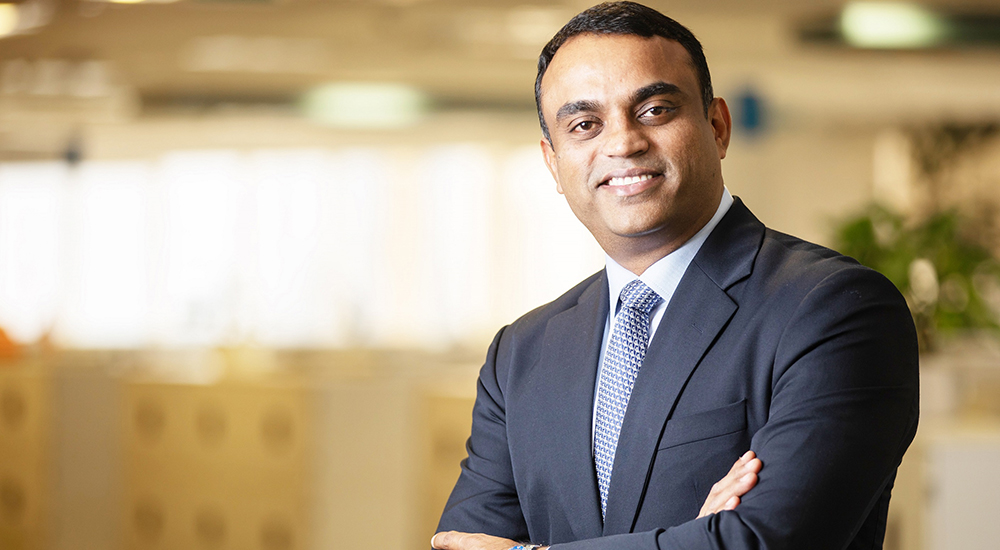Three steps to align networks and digital transformation

With every organisation at a different stage in their transformation journey, and technologies frequently moving faster than they can keep up with, it can be easy to lose sight of what they are trying to achieve in the long term in a rush to just get on with things and deliver immediate and tangible changes.
So, what networking lessons can be shared from some recent digital workplace transformation projects that might come in useful for those organisations who might need to stop and pause?
#1 Definition of workplace
With today’s need for increased mobility, the demand for network support both inside and outside the workplace, be that an office, school, shop or hospital, is intense. However, though most organisations are already thinking about remote working requirements when planning their digital workplace transformations, many are still failing to consider all the coverage black spots within the building itself, and in doing so, are missing a trick.
A recently completed wireless network upgrade was for The Finnish Institute of Occupational Health, FIOH, which is an organisation that specialises in wellbeing at work. With such a remit, digital working is inevitably a major focus, and to be able to best advise its clients, the organisation has set itself the mandate of truly living digital working, not just researching it.
When the time came to refurbish its headquarters in Helsinki, FIOH decided it was the perfect opportunity to rethink its current network provisioning, and install a solution that would enable complete mobility for its staff, wherever they work. Importantly, FIOH did not just mean the places where employees might be stationary, in rooms, at desks or in shared lounge areas, but those they would potentially move through while still on calls or using their digital applications.
Thinking holistically about the journeys that its staff took around the building, FIOH was challenged to implement a solution that would support VoIP calls as staff walked between floors, moved from one meeting room to another, and even when they travelled up and down in lifts – all with no interruption to signal.
Takeaway #1: When planning your digital workplace transformation, take the time to consider how your employees, guests, visitors and things currently move around your building. The more mobility you can drive, the more dynamic, flexible and adaptable your workplace will end up being.
#2 Adequate network visibility
While all these new devices sound brilliant in practice, the reality of trying to keep track of them on the network can be less so – particularly when organisations find themselves scrambling to get a handle on the situation. The second lesson, therefore, is one of visibility.
Viessmann, one of the world’s leading providers of holistic energy and climate solutions, needed a powerful new network to support the digitisation of its internal processes. As with FIOH, the organisation wanted to provide Wi-Fi connectivity in every corner of its sites, in order to support both a move to flexible desks and a heavier focus on bringing IoT technologies into its manufacturing processes.
As part of its ongoing transformation, Viessmann is aiming to get 80% of its devices on the Wi-Fi network. And with over 12,100 employees, 23 production companies in 12 countries, and sales companies and representatives in 74 countries worldwide, and that is a lot of devices.
Before these devices connect to the network and start transmitting valuable data, Viessmann knew it needed to put in place a flexible management system that would enable it to control network access for all its devices in the future.
By bringing in a solution, which uses an integrated, context-based policy engine, to manage network administrator rights, Viessmann can rest assured that it has total control over the devices on its Wi-Fi network at all times.
Takeaway #2: Make sure that network access controls and network management form a key part of any decision you make to bring new devices into your organisation.
#3 Forgotten the wired network?
Göliska-IT is a service provider for six Swedish municipalities. The organisation first started working with Aruba in 2008 when it was looking to create a scalable solution for wireless access that would grow as its customer base of politicians, teachers and students continued to expand.
Though wireless is the primary method of connecting to its network today, this summer the organisation began the next phase of its network upgrade – replacing the current wired switches to create a unified network management system that will drastically simplify how the network is managed.
Over the next five years, the organisation will migrate over 900 switches. With these combined solutions, Göliska-IT will be able to sit back and let the solution automatically enforce consistent access policies across both its wired and wireless networks – regardless of how devices connect – to keep traffic secure and separate.
Not only should this reduce the strain on network management, but the increased simplicity and efficiency of the network operations and delivery will also allow Göliska-IT to accelerate the provisioning of services to drive its digital transformation further and faster.
Takeaway #3: Do not stop at Wi-Fi deployment – instead, look for ways to harmonise your network architecture across both wired and wireless to truly digitally transform your organisation.
The benefits that digital transformation offers organisations today are undeniable, but they can be complicated to truly realise if everyone involved does not approach the project with their eyes fully open. Before diving into anything, make sure your project lead takes all the relevant disciplines through the overarching vision.
Key takeaways
- The more mobility you can drive, the more dynamic your workplace will end up being.
- Make sure that network access controls form a key part of any decision you make to bring new devices into your organisation.
- Look for ways to harmonise network architecture across both wired and wireless.
- Benefits that digital transformation offers organisations are undeniable, but they can be complicated.
By Jacob Chacko, Regional Business Head Middle East, Saudi and South Africa, Aruba HPE.





